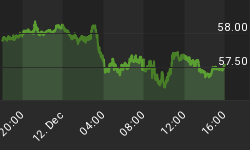$1 trillion (yes with a "t") and counting. US student loans are a prime candidate to be the source of a future financial crisis with the predictable QE response, bank bail-outs and all around money supply shenanigans. It is estimated that $85 billion in student debt was delinquent in Q3 of 2011. The use of debt to fund secondary education in the US has risen sharply over the years:

The total U.S. student-loan debt has reached almost $1 trillion.

None of this will come as a surprise to those acquainted with the basic economic concept that you get more of whatever you subsidize and typically at higher than market clearing prices. So in the same way that artificially low interest rates and risk subsidies from Fannie Mae and Freddie Mac drove home ownership rates and prices to unsustainable levels, subsidized loans to students have lead to the rapid growth in what can only be described as the diploma mill business while at the same time pushing the cost of such education to stratospheric levels.
Saskatchewan Farmland Values Increase 21% in 2011?
According to the recently released report on farmland values issued by Farmland Credit Canada "In the second half of 2011, farmland values in Saskatchewan increased an average of 10.1%, the highest average increase across Canada. This followed gains of 11.6% and 2.7% in the previous two reporting periods, continuing the decade-long trend of price increases that began in 2002. In Saskatchewan, farmland values increased by an average of 1.8% per month in 2011. The results in Saskatchewan, which has 40% of Canada's arable land, appear to mirror what's occurring in the United States, where double-digit increases in farmland values have been reported in several corn and soybean states."

"The ongoing strength of commodity prices combined with a land market that had historically increased at a slower rate than in other areas of the country are two contributing factors to the current value increase. The rising values are also attributed to good seeding and harvest conditions in most areas of the province, coupled with low interest rates."
"The Fog of Currency War"
Regards,
















